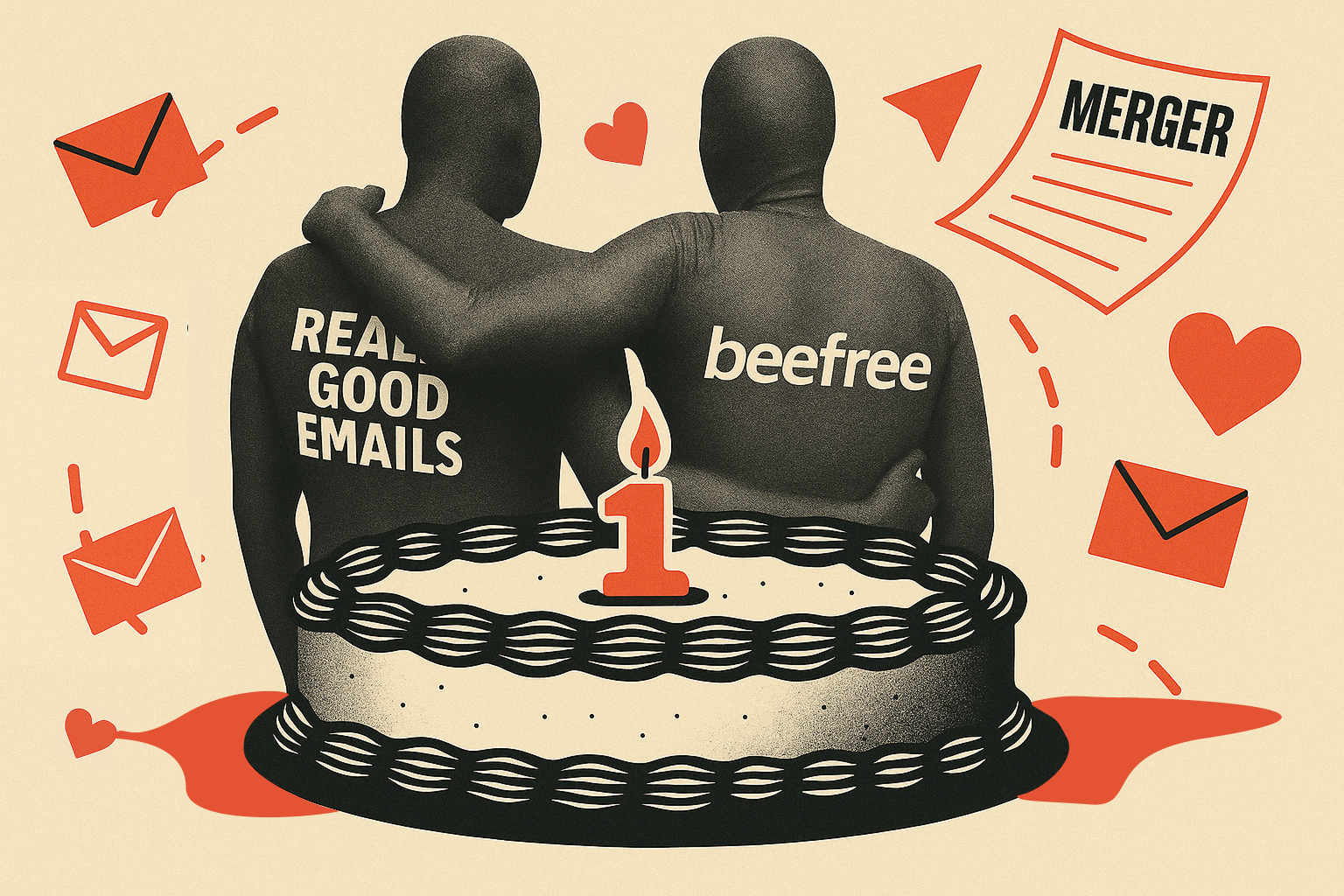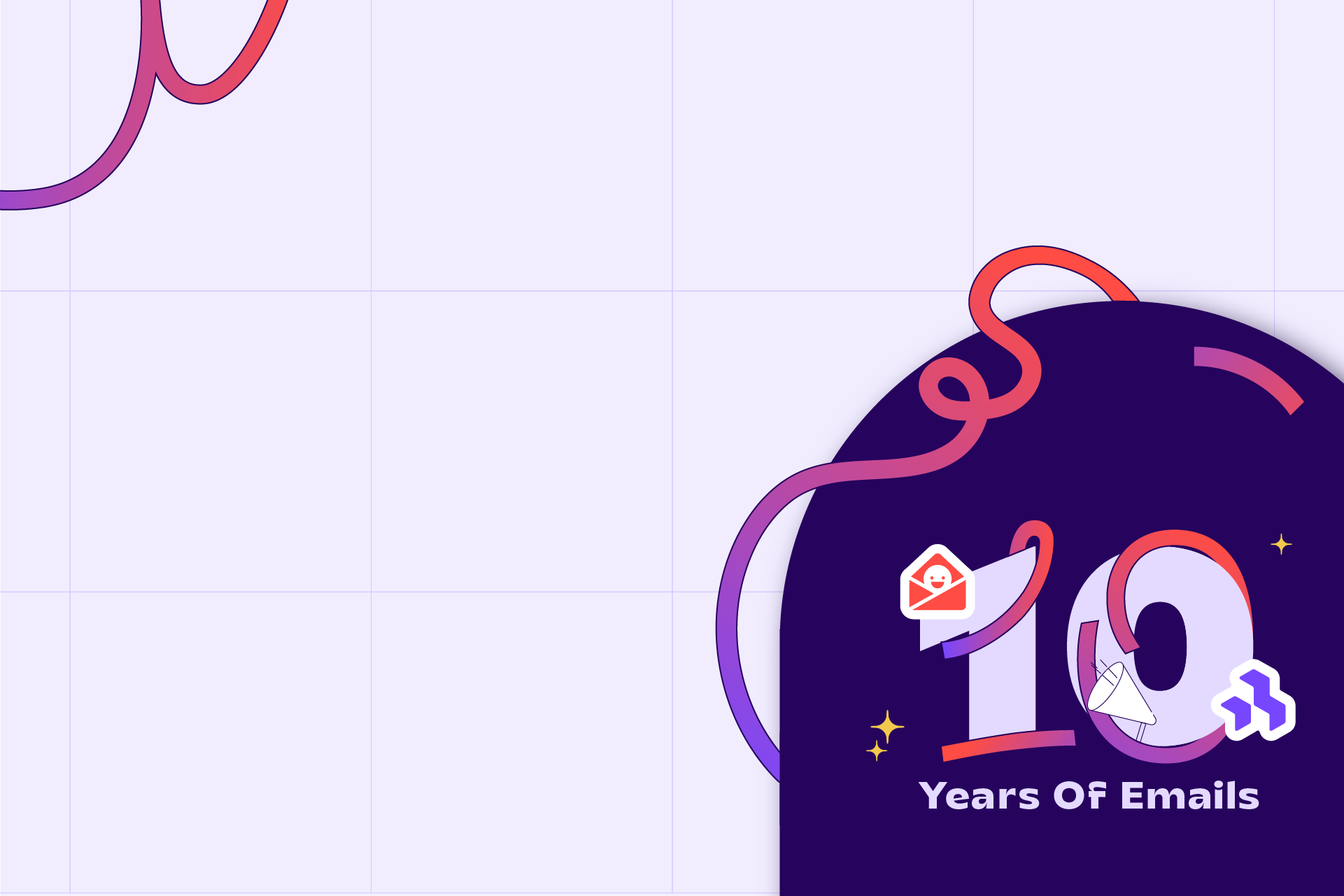Running all the things in your email marketing strategy might seem like both a blessing and a curse. You have to keep an eye on 100 different things on a daily basis. Test. Double-check. Test again. And...again. The good news is it doesn’t have to be complicated when you’re planning your email campaigns. Here are 8 steps to get your game plan together and create a really good email campaign.
Step 1: Figure out who you’re sending the email campaign to
One of the most important factors to figure out with your campaign is whose inbox you’re showing up in. This can help you decide on the tone of the email and what message you want to craft.
Creating customer personas can help you picture the people you’re talking to and what their personalities are like. What are their interests? Who do they spend their time with? Are they down for some Jeni’s ice cream?
Understanding your audience will help you figure out what action you want them to take. Plus, you can segment your list to send messages to specific groups of people and make this line of communication that much more personalized.
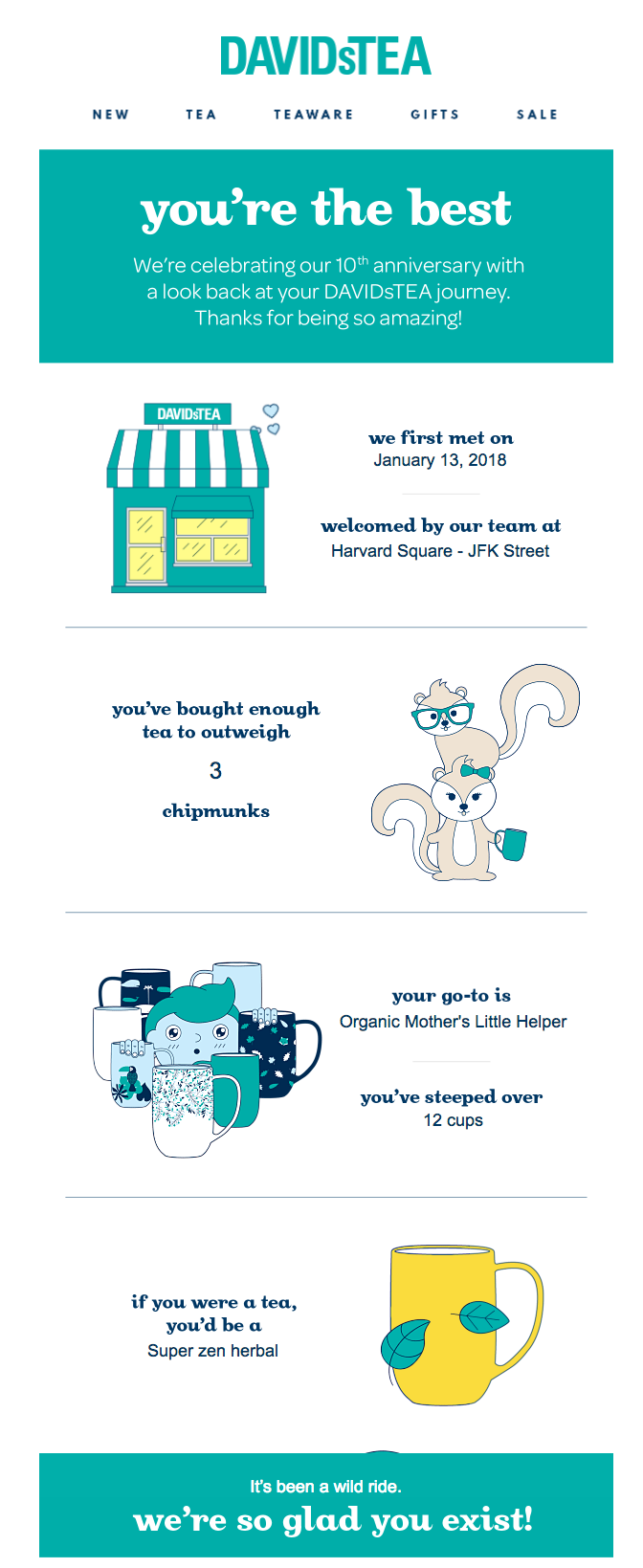
DAVIDsTEA celebrated the company’s anniversary with a personalized email based on subscriber engagement.
Step 2: Think about how you can serve your audience
If email is relationship designed, think about the value you bring to your audience and how you can deliver that to them in your message. Give readers a behind-the-scenes look at your team. Share product updates with them. Invite them to watch a movie with you.
Ask yourself, what’s the purpose of this email? What’s the problem I’m trying to solve for my audience?
Try brainstorming your ideas somewhere outside of the ESP to eliminate distractions. Use a site like Evernote, Google Docs, Notion, or Asana, or take out a notebook and pen to write down your thoughts. Think about the goal of the email and what action you want to drive your audience toward.

ActionRocket shared team photos in this holiday/year-end email.
Step 3: What type of email campaign are you sending?
You might need to send more than one email to get your audience to the right place (and consider setting up an automation). The type of email campaign will depend on your goal for your audience and the message you want to send.
Here are a few campaign ideas to get you started:
Welcome Email
As soon as someone signs up for your emails, send them a quick hello or a promised discount. Invite them into your virtual home. A welcome email serves as a first impression for your audience. These emails also tend to result in high open and clickthrough rates.

G2’s welcome email.
Newsletter Email
Send a regular, personalized message with industry news, company and product updates, memes, fun GIFs, and what playlist you’re listening to lately. This is a great way for your audience to get to know the faces behind the branding, to learn something new, and build a personal connection.
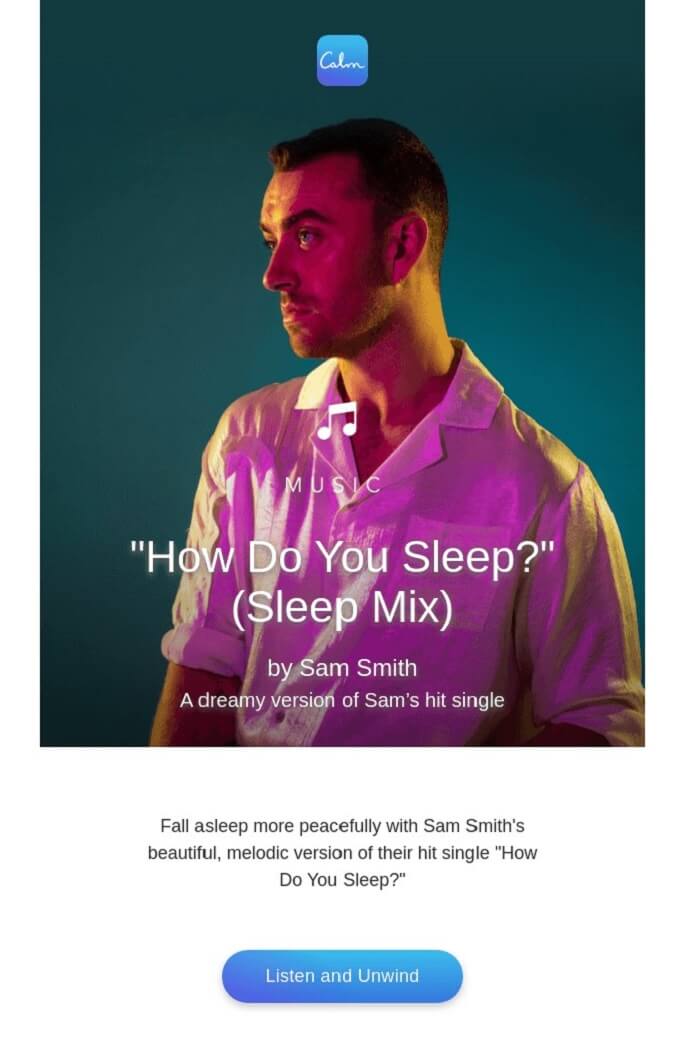
Calm’s newsletter featuring a Sam Smith recommendation for maximum relaxation.
Promotional Email
Showcase products, services, a new video, or a sale with a promotional email. This is also a great opportunity to share customer testimonials, using social proof to back up why people should buy what you’re selling.
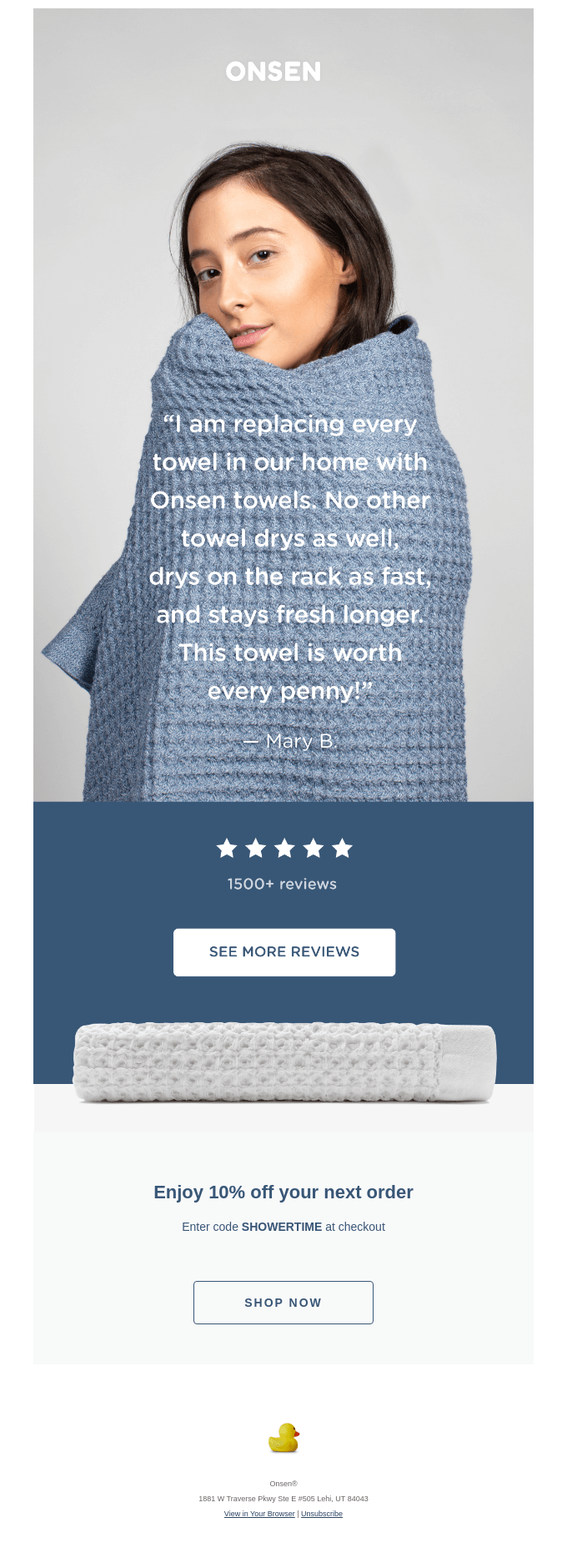
Onsen’s promotional email with a review and a discount.
Announcement Email
Share product releases, features, updates, and company news in an announcement email. You can also run a giveaway, announce a fundraising cause, or reveal a product launch.

Google included interactive elements where readers could click to change the color of their earbuds in this announcement email.
Step 4: Build the email template
When you’re building your email template, think about the inverted pyramid. The most important email elements are at the top of the email (think logo, hero image, and/or headline), followed by supporting blocks of content (body copy, supporting images, CTAs).
Keep your subject line at 9 words max and 40 to 60 characters. For preview text, it’s recommended to keep the text at 85 - 100 characters. Make it both enticing and snappy!
Aim to create an email template that’s under 102KB. Fewer blocks of content and smaller images can help optimize your file size. Responsive design, mobile-friendly, easy to read text on mobile and desktop.
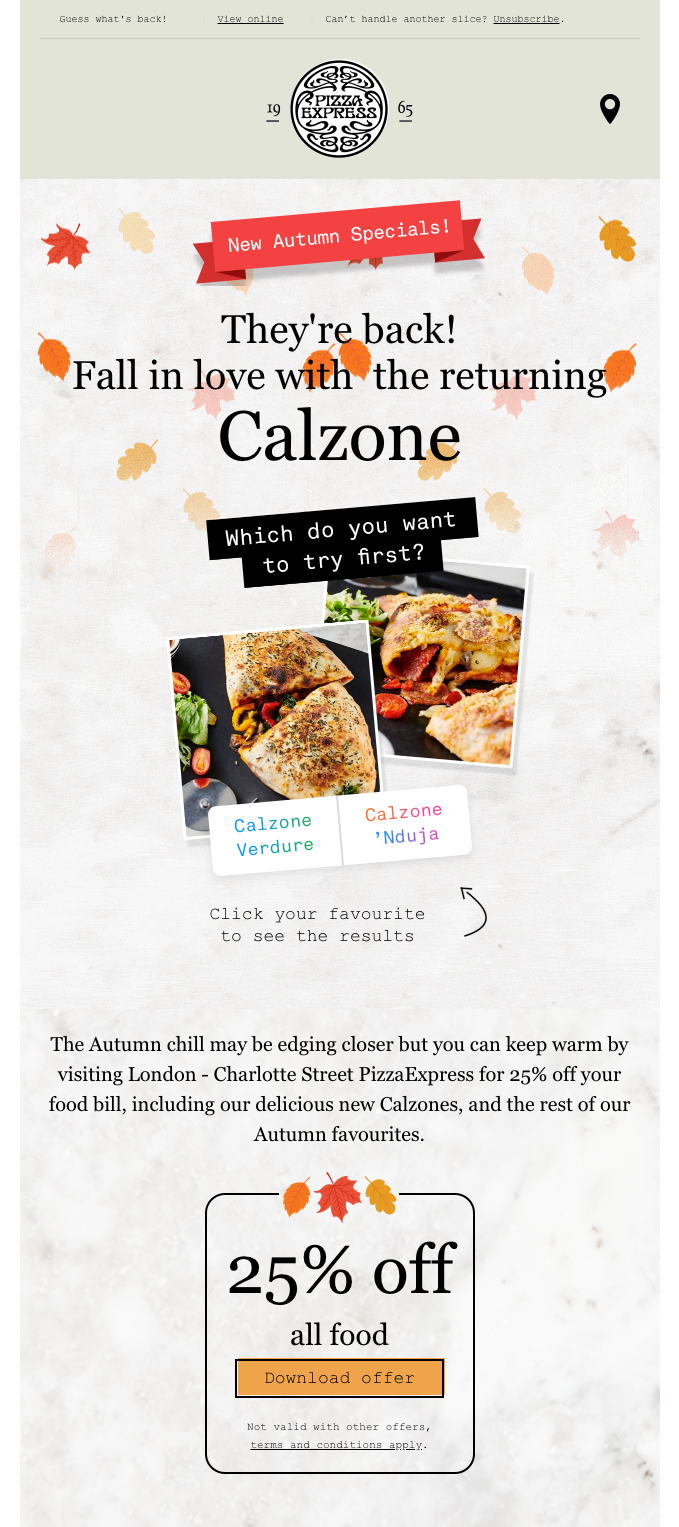
Make sure your email can be seen and heard by as many people as possible. Add alt-text to all images and use as much live text as possible in your email. Include images to complement your message and make your email pop, but steer clear of an all-image email. Subscribers with images disabled might miss out on your message in an all-image email.
Include a clear call to action. Think about where you want to take your audience. This might be a button that leads to a product on your website, a link to watch your latest video or a text link to a blog post. This is also where tracking links and UTM codes come into play.
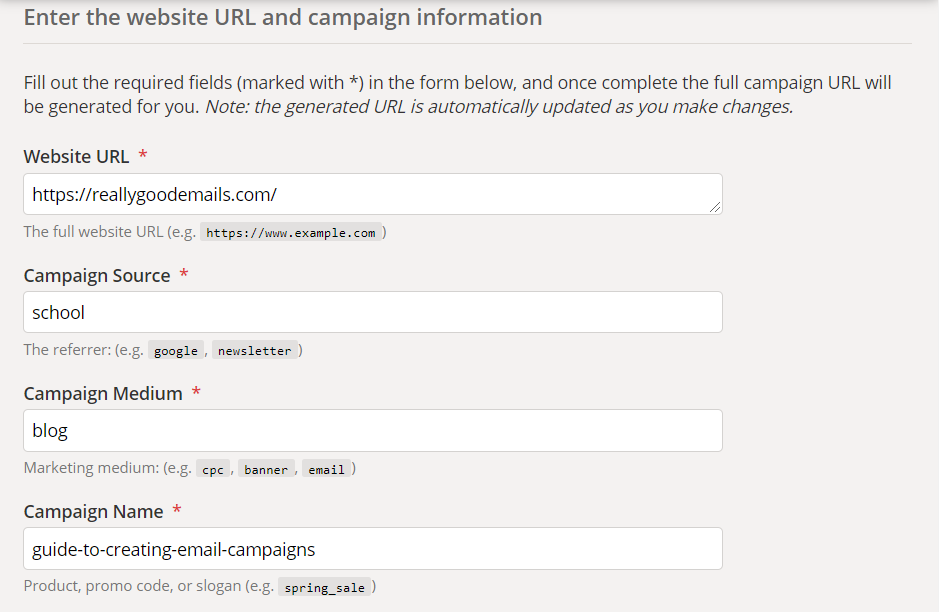
A UTM code is a code snippet you can add at the end of a URL. There’s a handy URL builder to add URL parameters and track campaign results in Google Analytics so you can keep track of where people are coming from (ex: ESPs like Omnisend and HubSpot also have UTM code builders.
Ad:

Step 5: Test your email template
Make sure your email layout looks good on multiple devices and email clients. You can use an email preview tool like Litmus or Email On Acid to test your emails and make updates, or you can manually send tests to people in your company.
A few things to keep in mind when you’re sending test emails:
- Make sure the text is large enough to read on mobile devices
- Confirm the email is responsive with images and text adjusting to the correct sizes on desktop and mobile devices
- Test the links in your email
- Make sure the email doesn’t get clipped (if it does, the email file size might be too large)

Step 6: Schedule your email campaign
The best time to send your email campaign can differ based on location and your audience’s engagement. Keep an eye on when your audience is most active with your emails and schedule campaigns to go out based on that activity.
Even if you need to send an email immediately, it’s best to schedule the email with some buffer time in case a last-minute change pops up or you realize that the “Hello [LNAME]” merge tag needs to be updated.
Step 7: Review your email campaign analytics
You’ve done all the work of planning, creating, and sending the email campaign. Now what? Check out the email reports to see what worked and what could be improved.
At the minimum, review your clickthrough rates to see what people engaged with the most in your email. From there, you can adjust your campaign strategy for follow-up campaigns
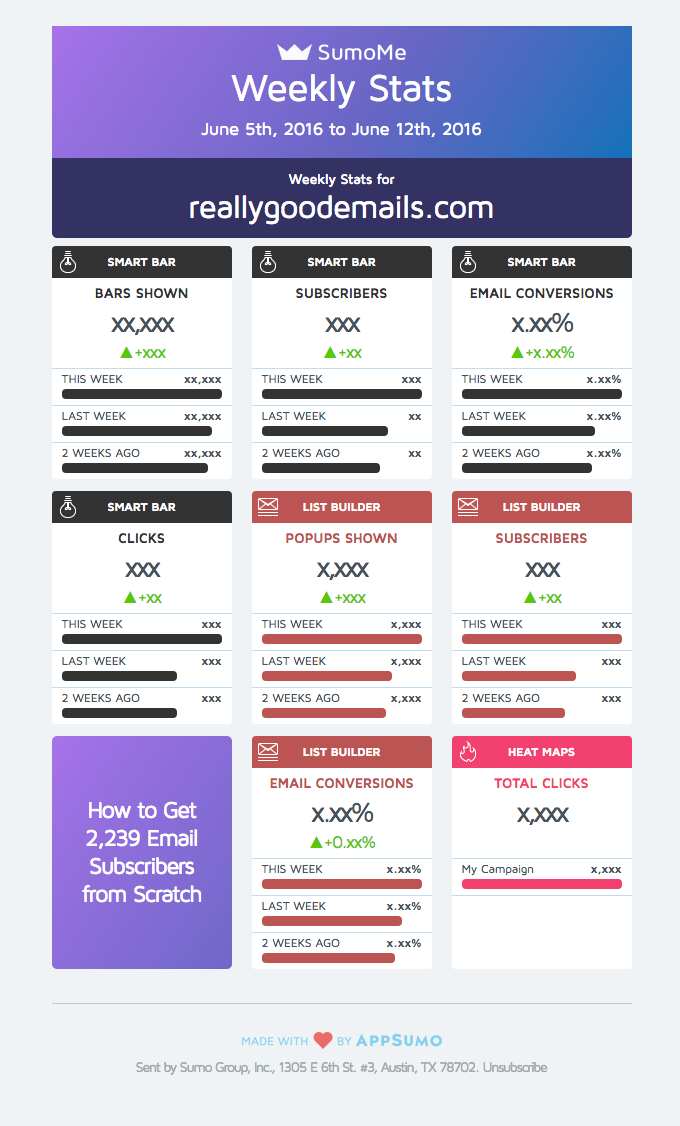
Step 8: Rinse and repeat!
Once you’ve got this process down for planning and sending your email campaigns, do it all over again! You don’t need to reinvent the wheel for every campaign.
Serve your audience. Think about what problem you’re going to solve for them, and then switch up the email contents according to that message and your campaign analytics.
Bonus: Document the process
Streamlining your email campaign process can save you time and free up your brainpower to be creative. Create an internal checklist so you can jump right into the planning process for each new campaign.

Documenting the process can also help when you’re out of the office or training new teammates.
Think about:
- Who’s involved in the campaign creation and approval process?
- Who writes the email copy?
- Who creates the graphics and design assets?
- Who builds the email templates?
- What links do you need to include in the email?
- Who’s QA’ing the email?
- Who’s scheduling the email?
- Who’s reviewing the analytics and when?
- What steps does your team need to take to wrap up campaigns within your deadline?
Get inspired
If you’re hitting a creative block or need some email design inspiration, create a Really Good Emails account and start collecting emails (or submit your own!). With thousands of the web's best and most attractive emails, there’s something for everyone.
Ad:

